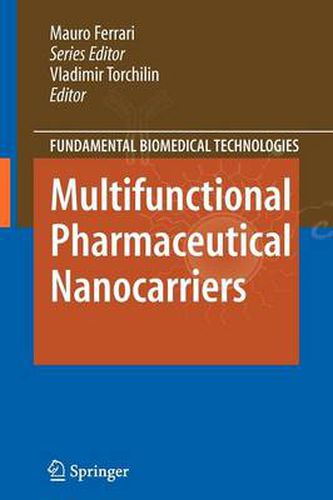Readings Newsletter
Become a Readings Member to make your shopping experience even easier.
Sign in or sign up for free!
You’re not far away from qualifying for FREE standard shipping within Australia
You’ve qualified for FREE standard shipping within Australia
The cart is loading…






This title is printed to order. This book may have been self-published. If so, we cannot guarantee the quality of the content. In the main most books will have gone through the editing process however some may not. We therefore suggest that you be aware of this before ordering this book. If in doubt check either the author or publisher’s details as we are unable to accept any returns unless they are faulty. Please contact us if you have any questions.
The use of various pharmaceutical carriers to enhance the in vivo efficiency of many drugs and drug administration protocols has been well established during the last decade in both pharmaceutical research and clinical setting. Surface modification of pharmaceutical nanocarriers, such as liposome, micelles, na- capsules, polymeric nanoparticles, solid lipid particles, and niosomes, is normally used to control their biological properties in a desirable fashion and to simulta- ously make them perform various therapeutically or diagnostically important functions. The most important results of such modification include an increased stability and half-life of drug carriers in the circulation, required biodistribution, passive or active targeting into the required pathological zone, responsiveness to local physiological stimuli, and ability to serve as contrast agents for various imaging modalities (gamma-scintigraphy, magnetic resonance imaging, computed tomography, ultra-sonography). Frequent surface modifiers (used separately or simultaneously) include soluble synthetic polymers (to achieve carrier longevity); specific ligands, such as antibodies, peptides, folate, transferrin, and sugar moieties (to achieve targeting effect); pH- or temperature-sensitive lipids or polymers (to impart stimuli sensitivity); chelating compounds, such as EDTA, DTPA, and deferoxamine (to add a heavy metal-based diagnostic/contrast moiety onto a drug carrier). Certainly, new or modified pharmaceutical carriers (nanocarriers) as well as their use for the delivery of various drugs and genes are still described in many publications.
$9.00 standard shipping within Australia
FREE standard shipping within Australia for orders over $100.00
Express & International shipping calculated at checkout
This title is printed to order. This book may have been self-published. If so, we cannot guarantee the quality of the content. In the main most books will have gone through the editing process however some may not. We therefore suggest that you be aware of this before ordering this book. If in doubt check either the author or publisher’s details as we are unable to accept any returns unless they are faulty. Please contact us if you have any questions.
The use of various pharmaceutical carriers to enhance the in vivo efficiency of many drugs and drug administration protocols has been well established during the last decade in both pharmaceutical research and clinical setting. Surface modification of pharmaceutical nanocarriers, such as liposome, micelles, na- capsules, polymeric nanoparticles, solid lipid particles, and niosomes, is normally used to control their biological properties in a desirable fashion and to simulta- ously make them perform various therapeutically or diagnostically important functions. The most important results of such modification include an increased stability and half-life of drug carriers in the circulation, required biodistribution, passive or active targeting into the required pathological zone, responsiveness to local physiological stimuli, and ability to serve as contrast agents for various imaging modalities (gamma-scintigraphy, magnetic resonance imaging, computed tomography, ultra-sonography). Frequent surface modifiers (used separately or simultaneously) include soluble synthetic polymers (to achieve carrier longevity); specific ligands, such as antibodies, peptides, folate, transferrin, and sugar moieties (to achieve targeting effect); pH- or temperature-sensitive lipids or polymers (to impart stimuli sensitivity); chelating compounds, such as EDTA, DTPA, and deferoxamine (to add a heavy metal-based diagnostic/contrast moiety onto a drug carrier). Certainly, new or modified pharmaceutical carriers (nanocarriers) as well as their use for the delivery of various drugs and genes are still described in many publications.